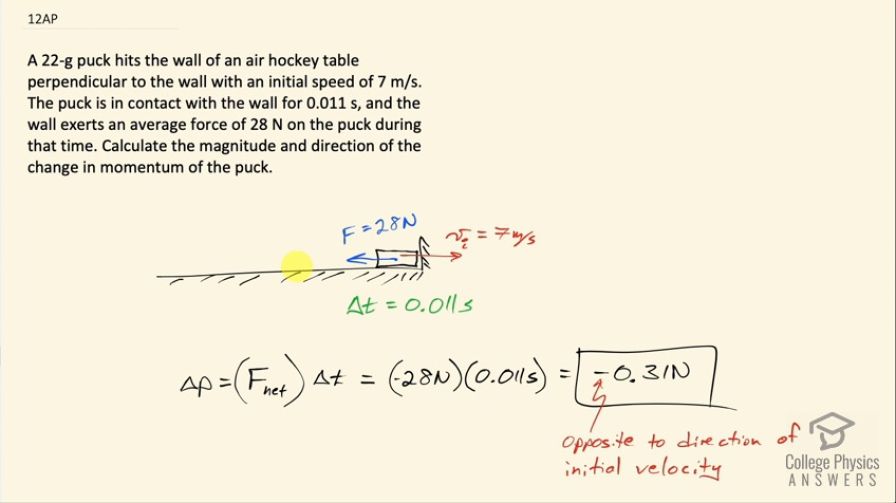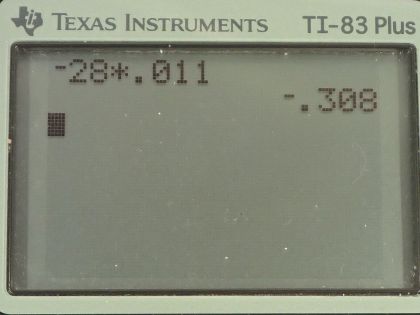Question
A 22-g puck hits the wall of an air hockey table perpendicular to the wall with an initial speed of 7 m/s. The puck is in contact with the wall for 0.011 s, and the wall exerts an average force of 28 N on the puck during that time. Calculate the magnitude and direction of the change in momentum of the puck.
Final Answer
Solution video
OpenStax College Physics for AP® Courses, Chapter 8, Problem 12 (Test Prep for AP® Courses)

vote with a rating of
votes with an average rating of
.
Calculator Screenshots
Video Transcript
This is College Physics Answers with Shaun Dychko. A puck is sliding on a frictionless air hockey table and it hits the wall—perpendicular to the wall— it has an initial velocity of 7 meters per second, it's in contact with the wall for 0.011 seconds and the wall exerts a force of 28 newtons on it and the question is what is the change in momentum of the puck— both its magnitude and its direction? So change in momentum is net force multiplied by time and the net force here is just this one force applied on the puck due to the wall and we are gonna call that negative 28 newtons since we'll take the right to be the positive direction and the initial velocity is to the right in positive so the force is negative 28 newtons times 0.011 seconds and that is negative 0.31 newtons... seconds I should say... 0.31 newton seconds is the change in momentum. You could also write this unit as kilogram meters per second, it would mean the same thing. This negative sign just means that the change in momentum is opposite in direction to the initial velocity. So had the initial velocity been negative 7 meters per second had we drawn the picture differently, this change in momentum would be positive 0.31 newton seconds. And I guess considering this speed having only one significant figure, in that sense maybe the answer should have only one significant figure as well but the speed wasn't used in our calculations so our calculation consists only of these two numbers each of which has two significant figures so I think it's fair to put negative 0.31 as our answer.
